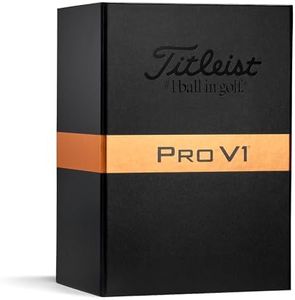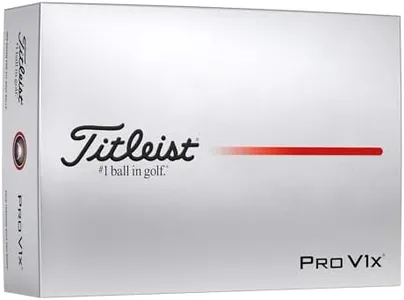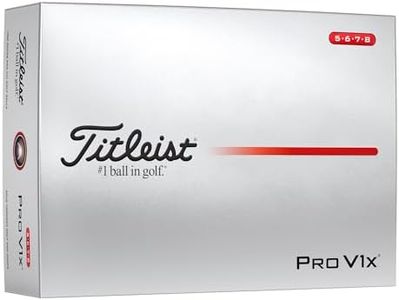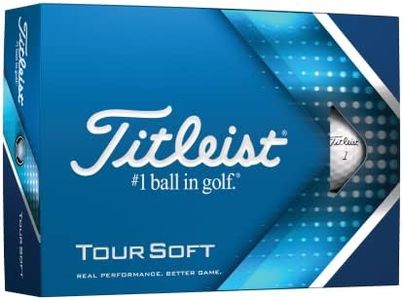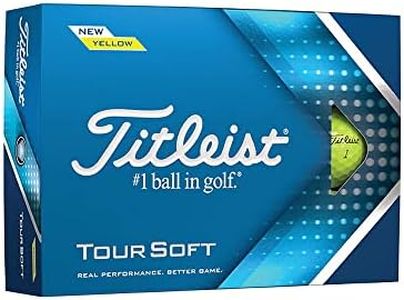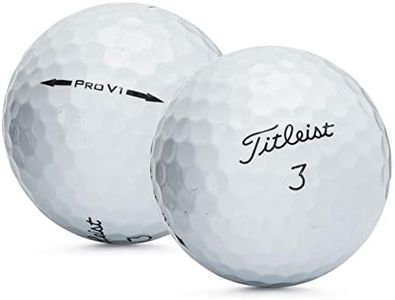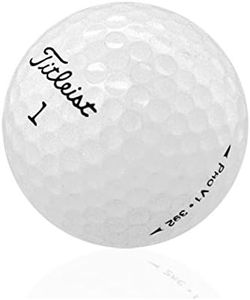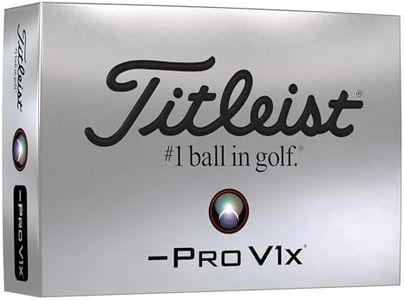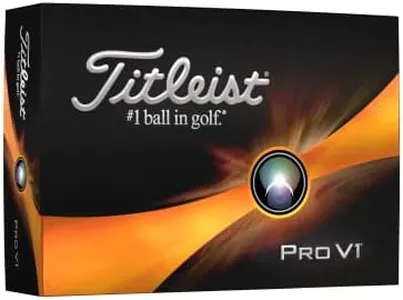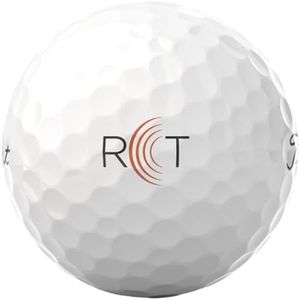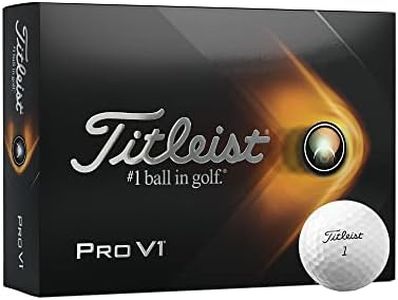We Use CookiesWe use cookies to enhance the security, performance,
functionality and for analytical and promotional activities. By continuing to browse this site you
are agreeing to our privacy policy
10 Best Titleist Golf Balls
From leading brands and best sellers available on the web.Buying Guide for the Best Titleist Golf Balls
Choosing the right golf ball can have a significant impact on your game, as different balls are designed to provide specific benefits such as distance, control, or feel. It’s important to consider your skill level, playing style, and what you want most out of your game when picking a golf ball. Rather than just defaulting to what the pros use, try to understand the properties of different balls so you can find the best fit for your abilities and preferences. Testing a few options on the course or practice range can also help you make a more personal and informed choice.CompressionCompression refers to how much the ball deforms when it's hit. Lower compression balls are softer and generally provide more distance for players with slower swing speeds, making them easier to compress and launch. Higher compression balls, which feel firmer, can offer more control and are typically favored by players with faster swings who can compress the ball effectively. As a guide, if you have a slower swing speed, consider a low-compression ball for effortless performance, whereas those with higher swing speeds may benefit from higher compression balls for added control and precision.
Cover MaterialThe cover material of a golf ball is the outer layer, most commonly made from either Surlyn (an ionomer resin) or urethane. Surlyn covers are durable and generally provide more distance but less spin. Urethane covers, on the other hand, offer greater spin and a softer feel, which is especially useful for short game control. Beginners and high-handicap players may prefer Surlyn for its forgiveness and durability, while more advanced players seeking greenside control often choose urethane.
Spin RateSpin rate refers to how much the ball spins after being struck. High-spin balls help experienced players stop the ball on the green quickly, but they can also make wayward shots curve more dramatically. Low-spin balls tend to fly straighter and reduce slices or hooks, making them friendlier to high-handicap players. If you struggle to keep the ball straight, a lower-spin ball may be ideal, whereas players looking to shape shots or maximize greenside performance might benefit from higher spin.
FeelFeel describes how soft or hard the ball feels when struck, especially noticeable on putts and chips. Balls with a soft feel are more comfortable on contact and provide better feedback for putting touch and short game play. Firm-feeling balls typically emphasize distance and may suit players who prioritize power off the tee. If you value feedback and delicate control close to the green, opt for a softer-feeling ball, but if you want more distance and aren’t as concerned with short-game control, firmer options are worth trying.
Number of Layers (Construction)Golf balls are built with different construction types: two-piece, three-piece, and even four or five-piece balls. Two-piece balls are simple and durable, aimed at maximizing distance and durability, and are a great choice for beginners. As the number of layers increases, balls offer more control and spin at the cost of some distance, making them preferable for intermediate to advanced players who want to fine-tune their game. Your level of play and what you prioritize in a ball—distance versus control—should guide which construction you choose.
